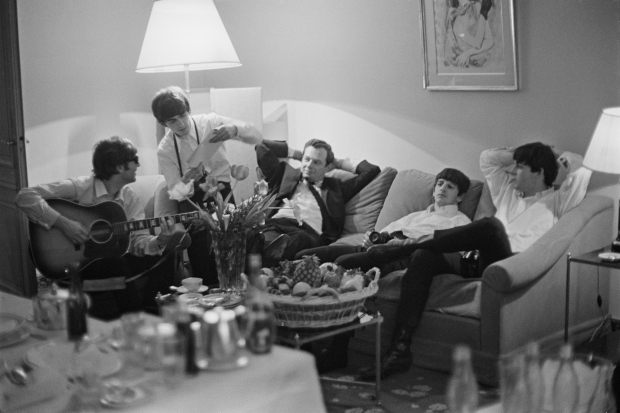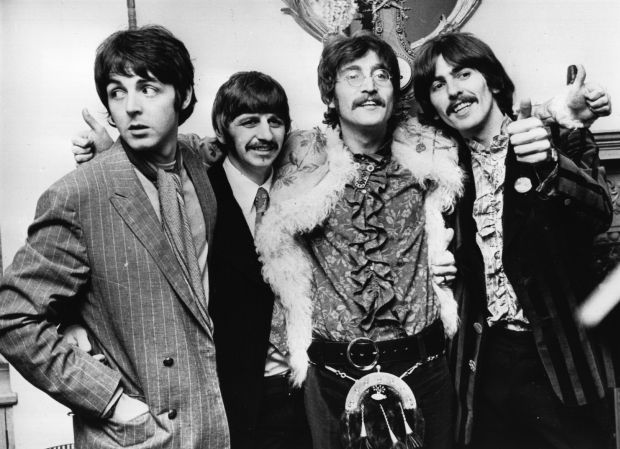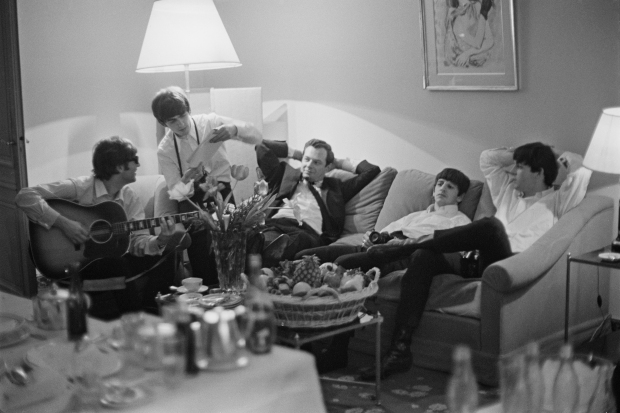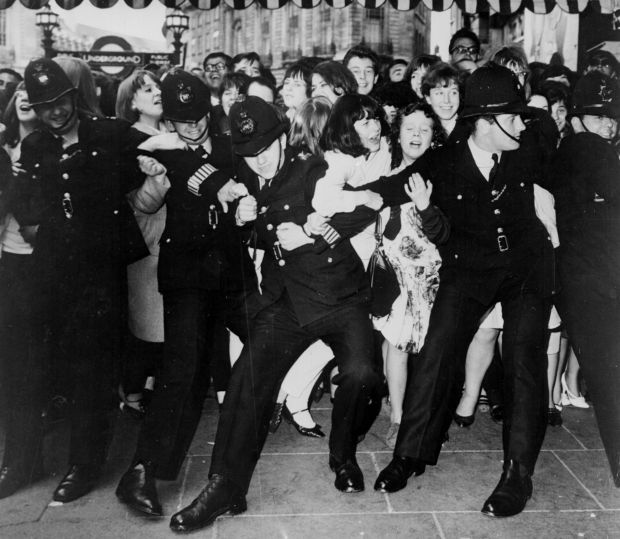50 years after the Beatles broke up, these Fab Four books have new stories to tell – Redlands Daily Facts

In the first half of this year, only two bands sold at least one million album units: the Korean boy band BTS and a British foursome that has had three top ten albums, including a Billboard No. 1, in the last three years … even though they broke up 50 years ago.
Yes, ladies and gentlemen, the Beatles. They remain the one band with endless staying power and an audience insatiable for more, more, more. This year marks a half-century since the band parted ways – yet paperback writers continue cranking out book after book.
The eclectic roster for 2020 includes “The Beatles on Screen: From Pop Stars to Musicians,” “The Beatles: Sweden and Denmark 1963-1970 (Unseen Nordic Archives),” “John Lennon, Yoko Ono and the Year Canada Was Cool,” “The Greatest Mystery of the Beatles: Critical Thinking on: Paul is Dead,” “The Beatles Finally Let It Be,” and “After Abbey Road: The Solo Hits of The Beatles.” (As well as a book tie-in to Peter Jackson’s rescheduled-to-2021 “The Beatles: Get Back” film, the approaching 40th anniversary of John Lennon’s murder promises another spate of books, such as James Patterson’s “The Last Days of John Lennon.”)
At the top of the pile are “George Harrison on George Harrison,” edited by Ashley Kahn (August 8), “And in the End: The Last Days of the Beatles” by Ken McNab (August 18) and “150 Glimpses of the Beatles” by Craig Brown (October 13).
The Harrison book features the guitarist’s interviews and writings, such as his first American interview — given to a high school newspaper when he visited his sister in the Midwest in 1963 — and a 1979 co-interview with Michael Jackson where they discuss the merits of recent releases by Foreigner and Eddie Money, among others.
The book, like Harrison, is often thoughtful and even profound about people, society and spirituality yet too frequently goes on too long about religion. Still, it’s filled with tidbits about the Beatles, from Harrison’s dissection of what he saw as McCartney’s autocratic approach on tunes like “Drive My Car” to this comment aboutt Ringo Starr: “In public, Ringo sings little and says less. But in private he is the star—far and away the party boy of the four of us… He’s the one the girls want to dance with.”
While that book delves inside one Beatle’s mind, Brown’s book zooms out beyond the band to encompass the fans as well. He visits numerous Beatles-related historical sites and discusses the thousand-plus Beatles tribute bands around the globe, pointing out that many — the Tefeatles from Guatemala, Rubber Soul from Brazil, the Nowhere Boys from Colombia – have been together longer than the Beatles were.
“150 Glimpses” is structured around this numerical gimmick, forsaking a comprehensive narrative for snapshots of the Beatles at moments in time. It sometimes meanders too far into trivialities yet sometimes those stories perfectly capture the Beatles as musical geniuses and pop culture icons.
Brown re-tells the story of how 14-year-old Melanie Coe met Paul McCartney after winning a TV show contest; it seemed to inspire a sense of adventure in her and three years later she ran away, prompting her parents to tell the story of her disappearance to the local newspaper. McCartney read the article about this runaway teen; not realizing his own connection to her, he saw a tale about a growing generation gap. Inspired, he wrote the classic “She’s Leaving Home.” If that was fiction, it would feel contrived. With the Beatles, it just seems magical.
The magic, of course, didn’t last and by 1969 the Beatles were rapidly disintegrating as a unit. McNab’s book recounts their annus horribilis as the band’s members all moved in different directions and fought over music, business and the involvement of spouses… even while coming together for one last masterpiece in “Abbey Road.”
“There are so many books about the Beatles, and it becomes what can you bring to the table that is slightly new, slightly different,” McNab says. “1969 was such a quixotic year and chaotic year, and I tried to look at it through a modern-day prism.”
Knowing that many books reprint stories that have been embellished into myths and legends, McNab also strove to stand out by interviewing people who were “at least an eyewitness to history, who could bring some perspective to the whole proceeding.”
His interviews included: A policeman who enjoyed the Beatles’ rooftop concert in January of 1969 from the rooftop itself and who says the band was never in danger of being arrested; the American DJ, who helped spread the “Paul is dead” story; and the young designer who decided on his own that the band was famous enough that their name could be left off the “Abbey Road” album cover.
McNab spoke by Zoom about his book wearing “an extremely old” “Abbey Road” T-shirt, which, it should be added, matched the one worn by his interviewer. This interviewed has been edited for length and clarity.
How important to the narrative were all your interviews compared to your historical research?
They gave me the chance to tease out new stories, where you might say, “Wow, I didn’t know that.” So much is buried under the sediment of time. When John Lennon was doing a bed-in with Yoko Ono and wanted to record “Give Peace a Chance,” the label sent this young engineer, Andre Perry.
I spoke to Perry, who walked into a new kind of crazy in the hotel bedroom. The Hare Krishnas are chanting, Allen Ginsberg and the Smothers Brothers are there singing along and it’s chaotic lunacy. What people maybe don’t know is that when Perry went back to his studio he realized John’s vocal was fine and the guitars were good, but the other voices in the chorus were so muffled the song was unusable. Unknown to anybody, he rallied some friends to provide a new backing chorus for the song. [Lennon approved the decision the next day.] For 50 years, Petula Clark has dined out on this story that she’s singing on “Give Peace a Chance,” but… well, why let the facts get in the way of a good story.
1969 was an evolutionary and revolutionary year for Lennon in particular. How much was his newfound activism a whim, how much of it was his love of generating attention and how much was deeply felt?
Evolutionary and revolutionary is a good way to describe Lennon in 1969. I always think of him as a volcano trapped in ice. He was so mercurial you really didn’t know what John Lennon you were going to get at that particular time.
He stumbled into the political activism almost by accident [after filmmaker Peter Watkins urged him to use his platform for good causes]. People thought he was naive but his activism was sincere. He said, “I’m just using my celebrity to sell peace” and it worked, becoming such an important part of the peace campaign and marches in America that year. But he also realized it would raise his profile as an individual, not necessarily as a Beatle, and that quite appealed to him — even though he was able to project his personal causes only because he was a Beatle.
Was it difficult to balance the tone of the book, with the creation of “Abbey Road” coming amidst the vicious business and even personal battles?
When trying to balance light and shade it always came back to the music, which provided a counterbalance to the negativity. They could fight nose-to-nose and the next day go into the studio as if nothing had happened. They were able to pull themselves back from the brink of implosion. It was Paul McCartney, always the Beatles’ cheerleader-in-chief, who felt they had one last great album in them. And “Abbey Road” is a tremendous swan song.
Having spent all this time immersed in the story, was the breakup inevitable and who is to blame?
It’s the age-old question. I was very careful not to apportion blame. There was just too much friction. Yoko’s presence undoubtedly was an issue. Having her always in the studio was pouring oil onto a burning fire. George seemed more upset than Paul, who tried hard to be the diplomat in these kinds of areas. And it’s very easy to blame Yoko or Linda McCartney — who were quite different personalities as well — but you must remember the Beatles were still in their 20s, they were very young men and I think it was just too much internal and external pressure for them to stay together.
There were so many factors: Paul buying up shares of Northern Songs music publishing without telling John; John’s heroin problem, which made him extremely volatile and unpredictable; George Harrison was entering the most creative phase of his life — I think had egos been set aside and they allowed two more Harrison songs on Abbey Road — perhaps “All Things Must Pass,” which they recorded — “Abbey Road” may have been the greatest record ever. But Lennon and McCartney said, “Two songs are enough for you, son.”
Then there were the business problems. Apple, which was hemorrhaging money at an alarming rate. And the introduction of Allen Klein into the scenario as manager was a major nail in the coffin — he is the demon king of the Beatles story.
Many bands have had members made solo albums or have broken up and reunited but the Beatles never did. Does that lend extra poignancy to their final days together?
I personally am glad they finished when they did. There’s no deterioration in the legend or in the body of work they left behind. Yes, maybe they could have gotten back together in, say, 1973 but there’s no guarantee it would have worked. They were a product of the ‘60s and if you bring them into another era maybe they wouldn’t have worked. Their songs still speak for themselves and we have them as an enduring legacy.
Even the cover of “Abbey Road” is a perfect finish: you see them walking off the page into history. At the end of the day maybe it was fate just saying, ‘This is the end, thank you and good night.’







There are no comments at the moment, do you want to add one?
Write a comment